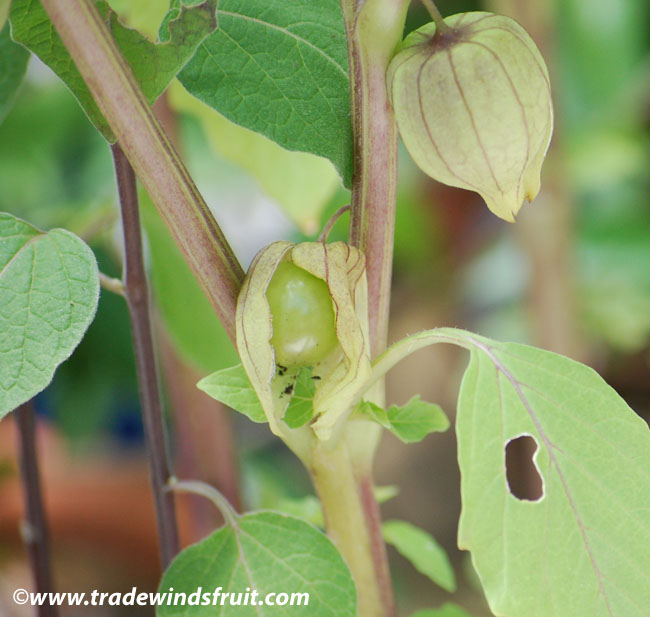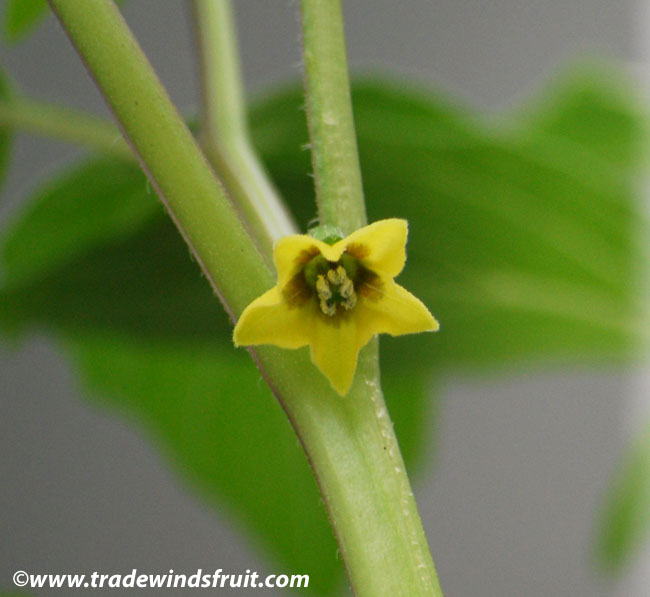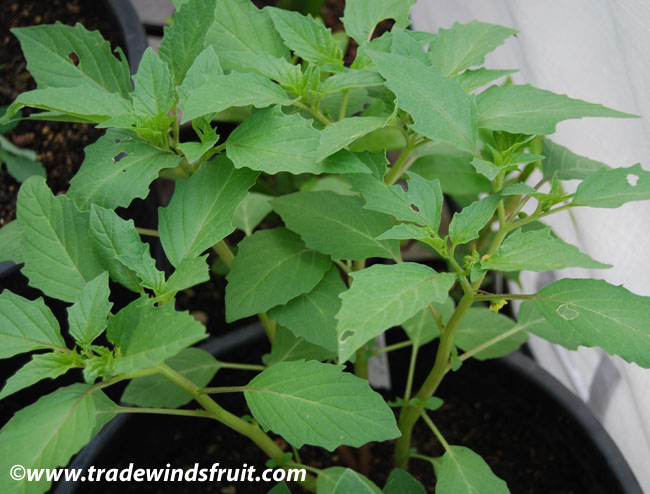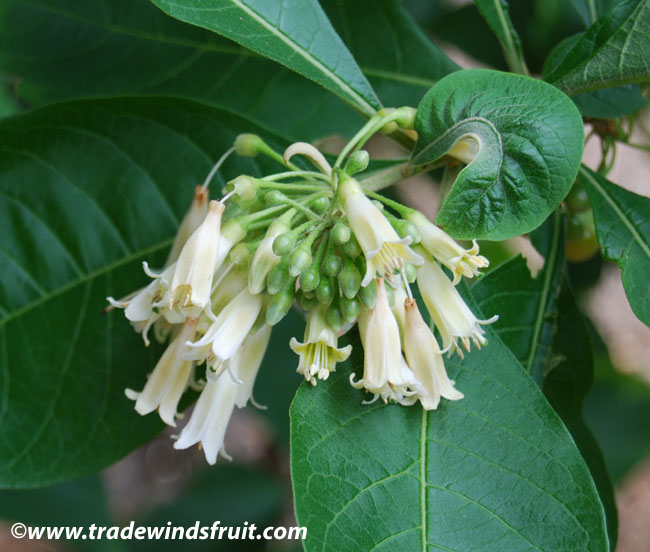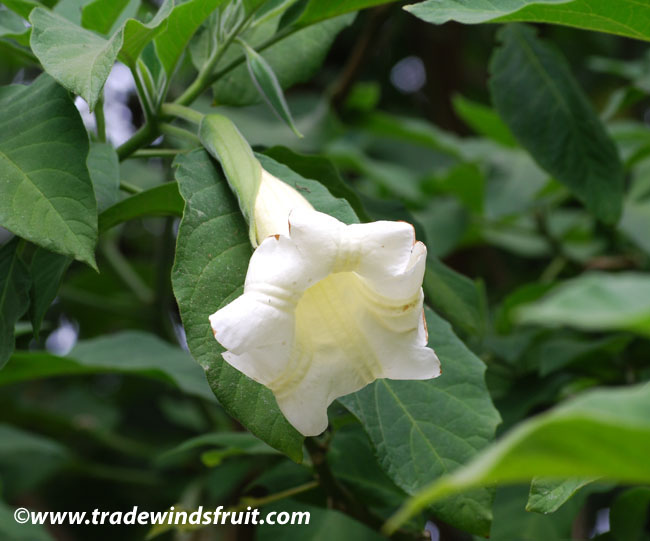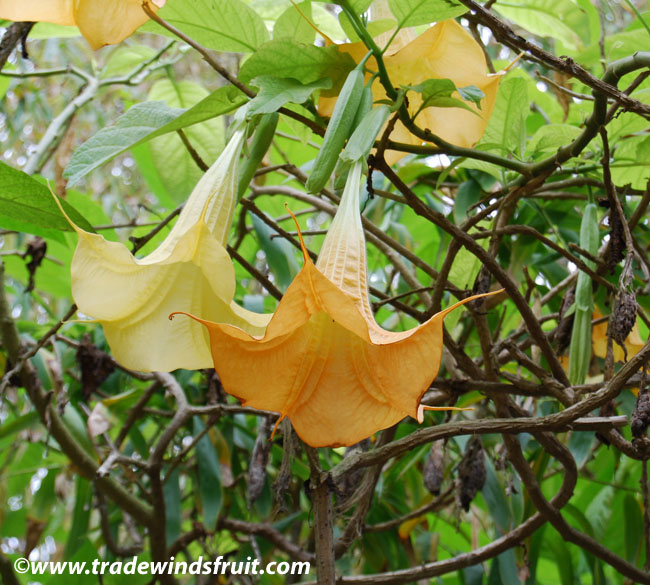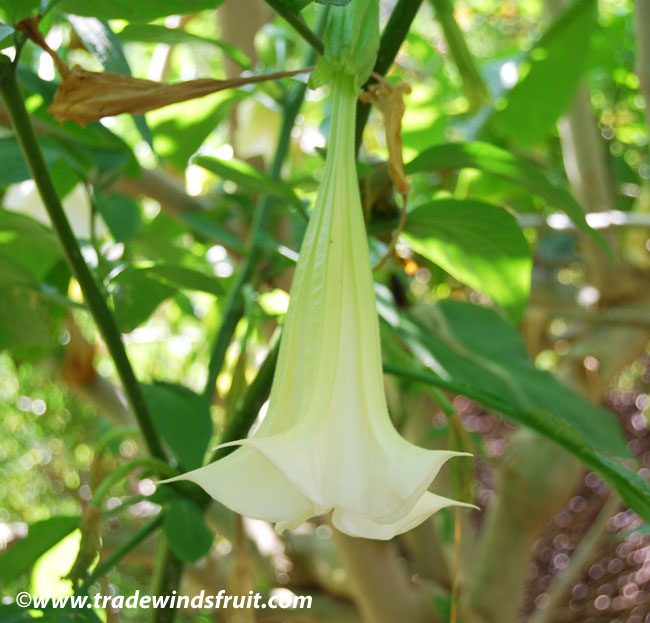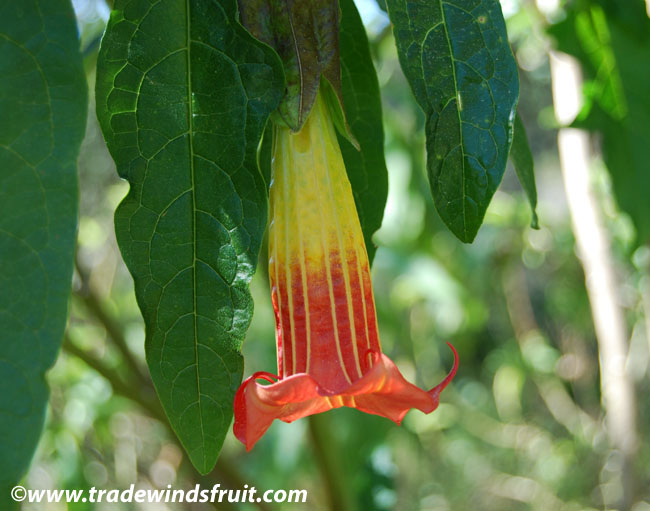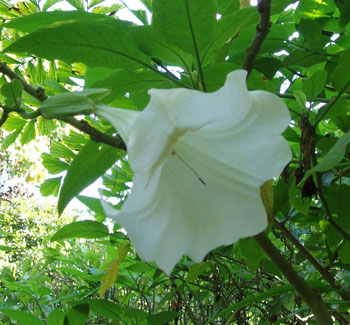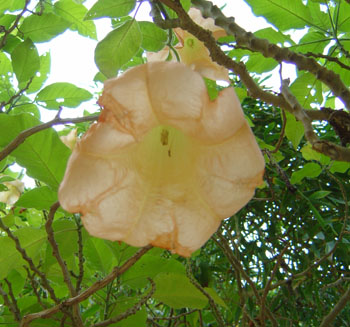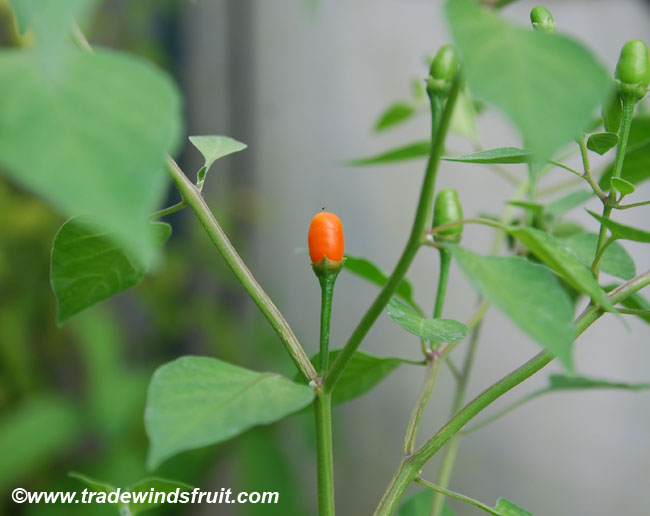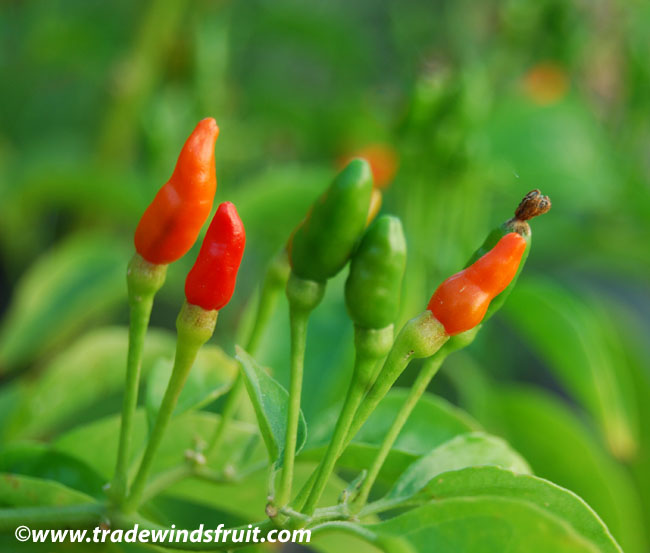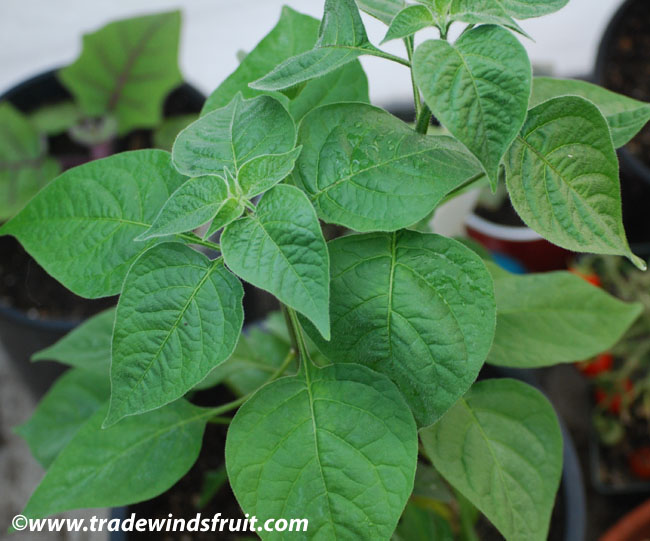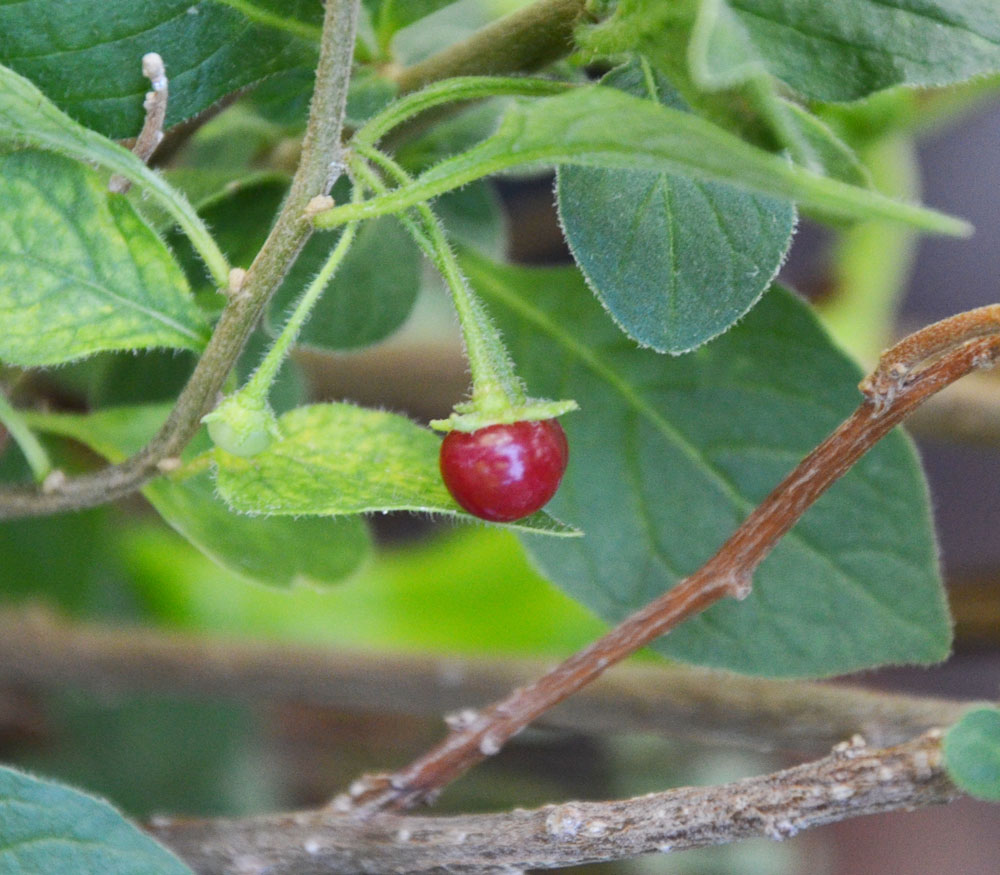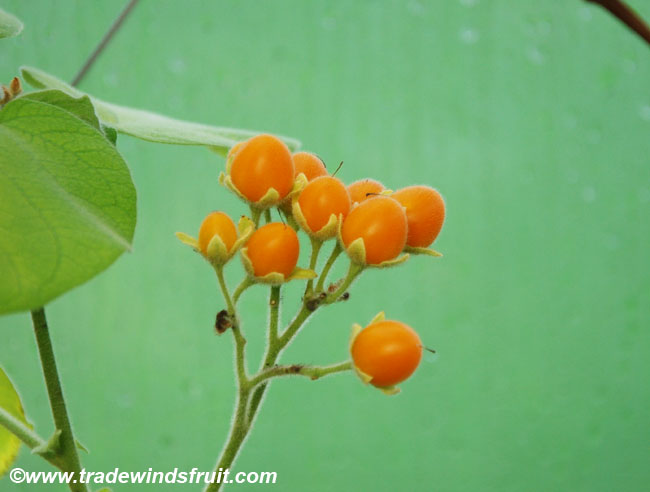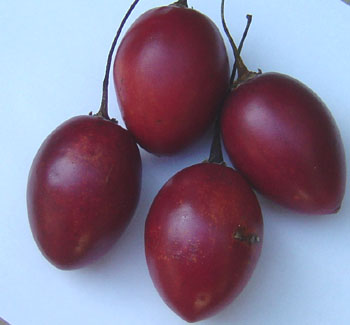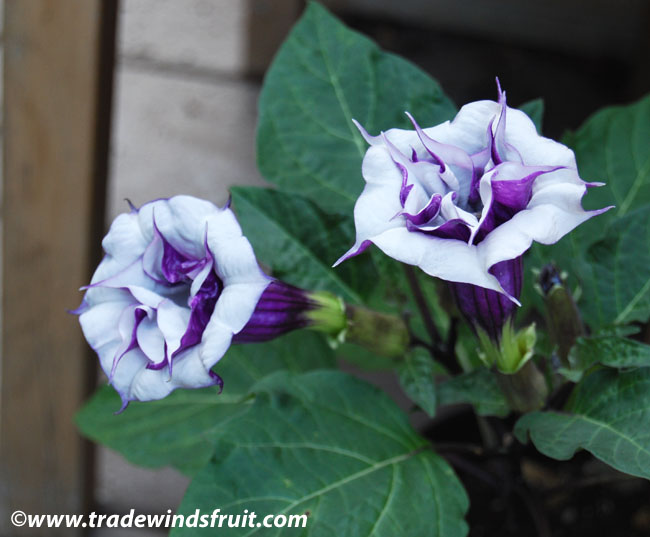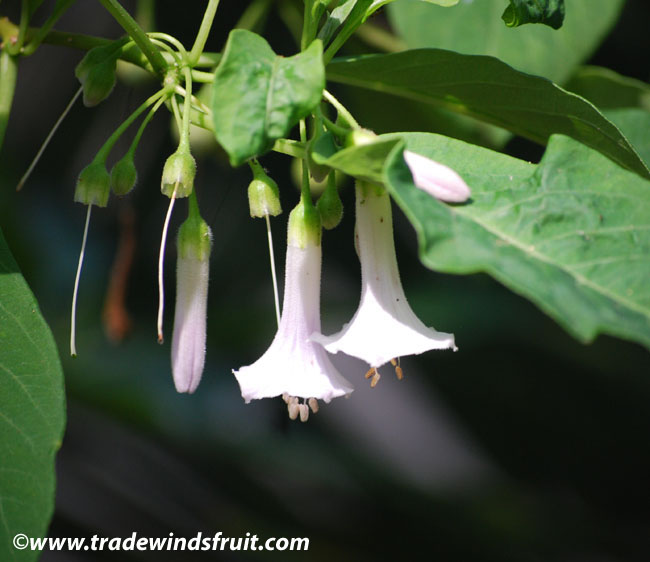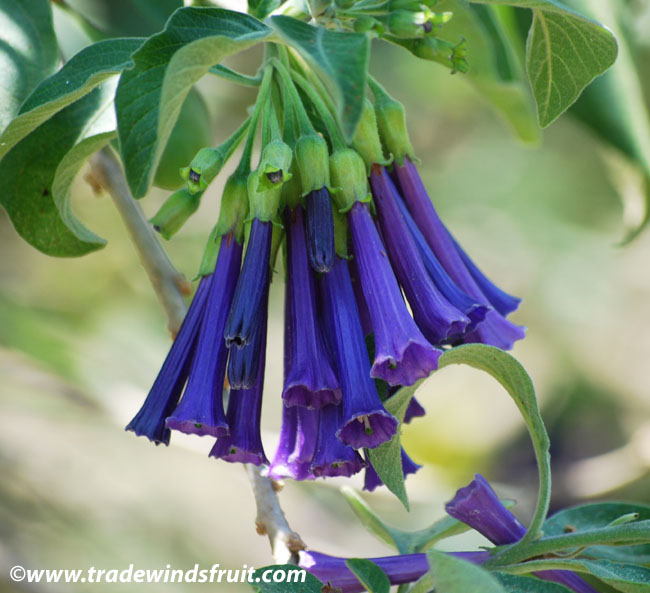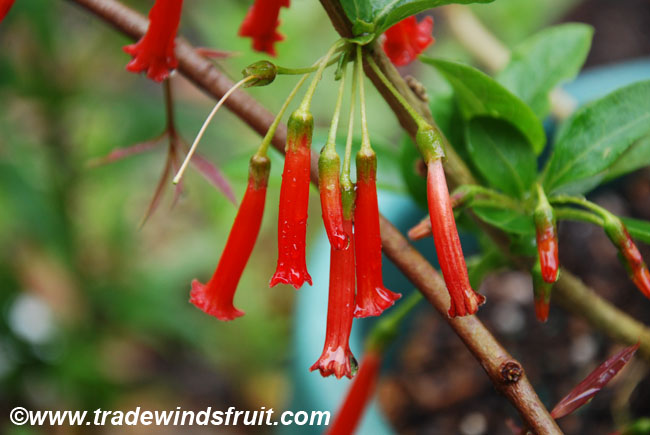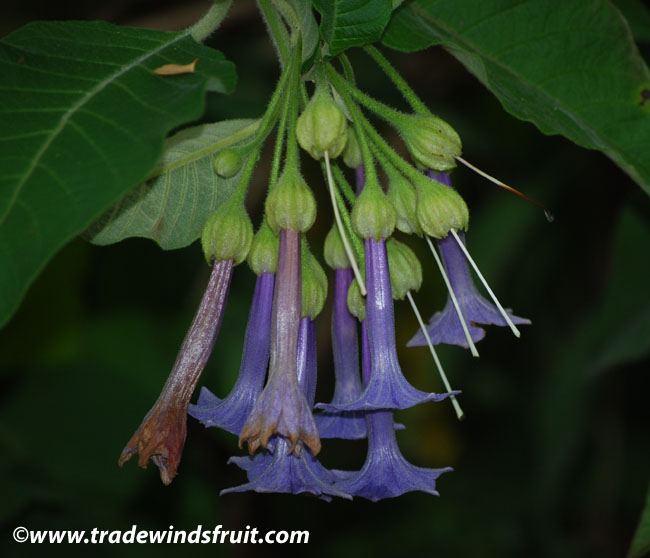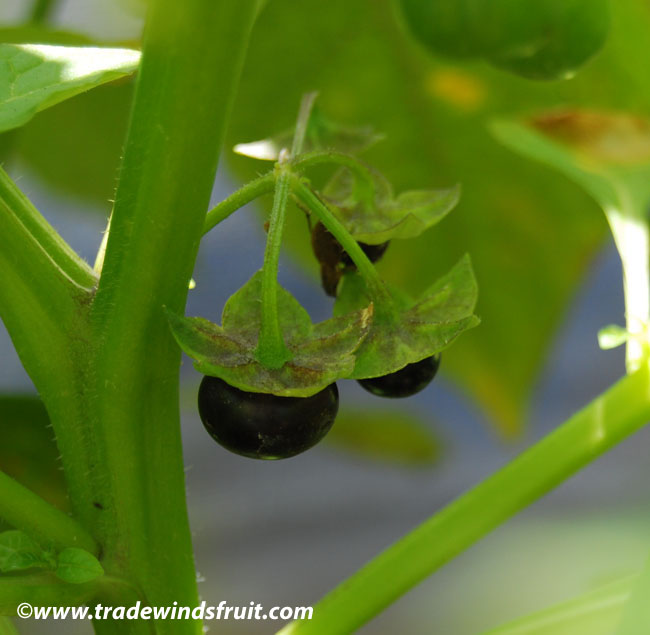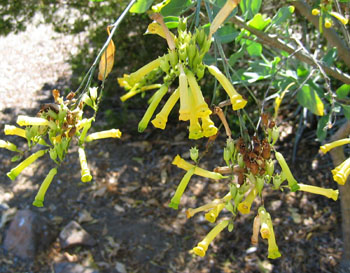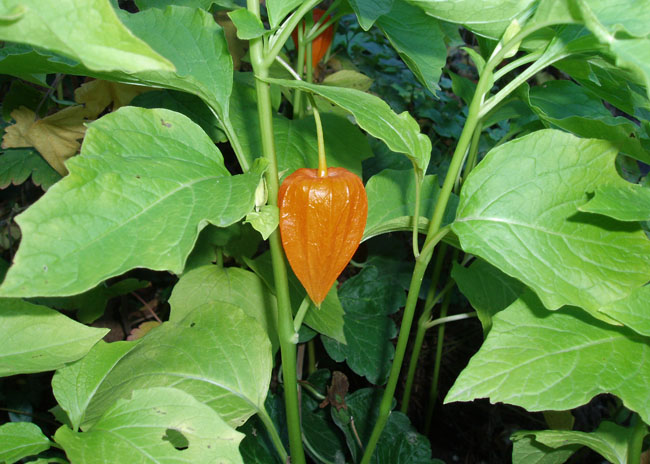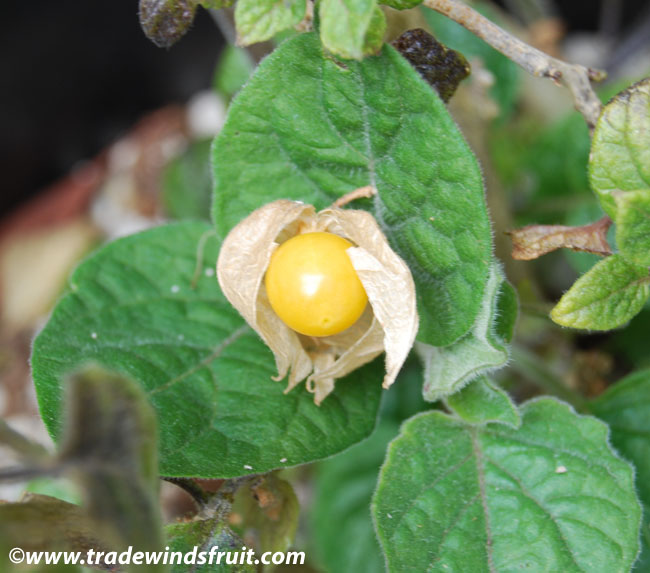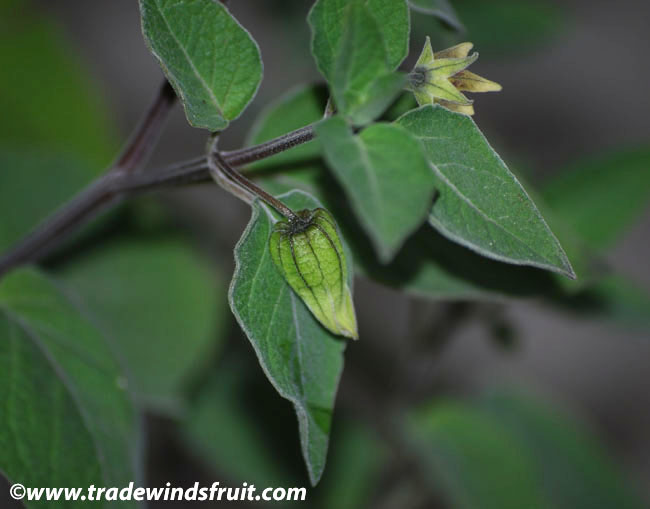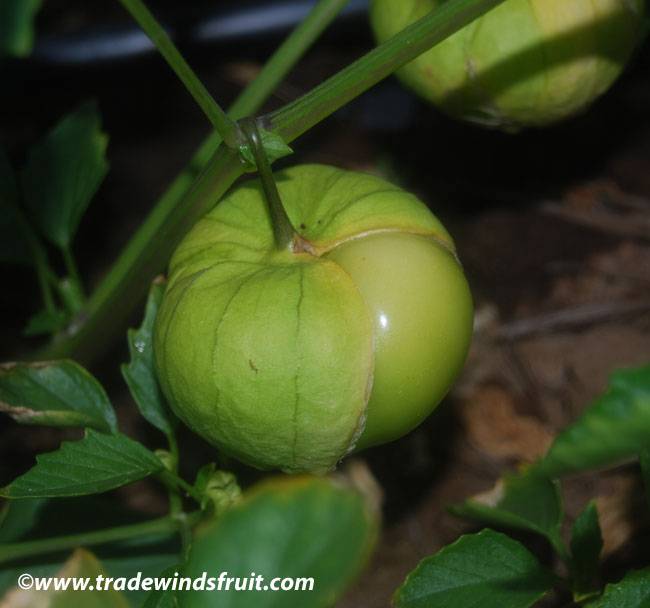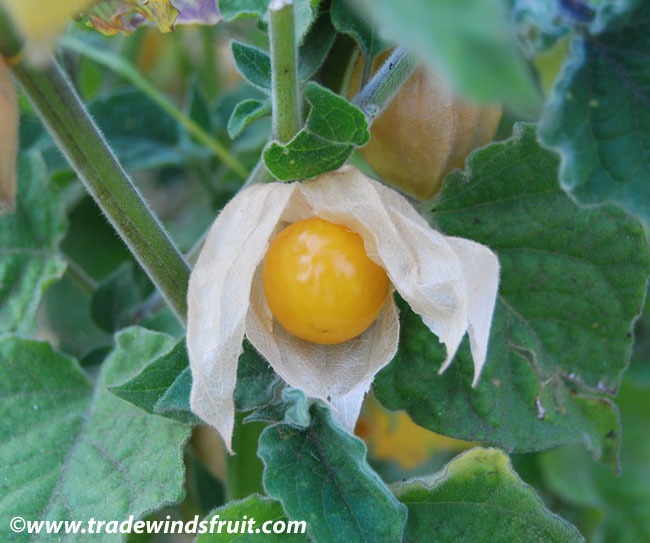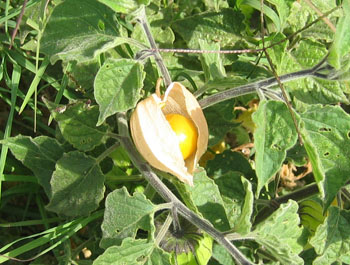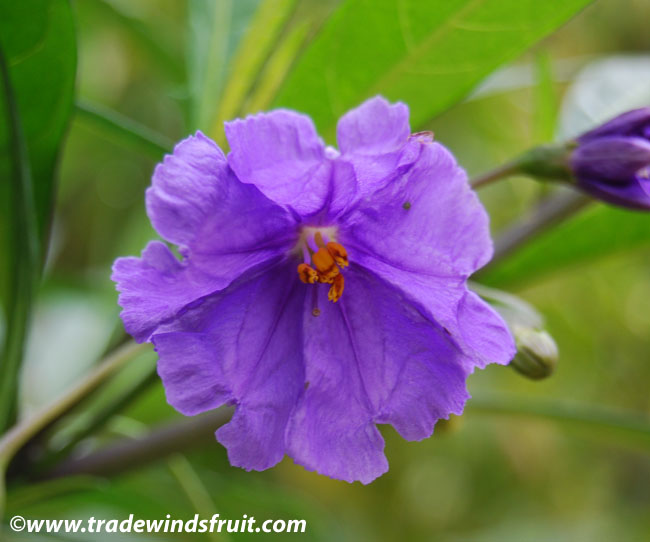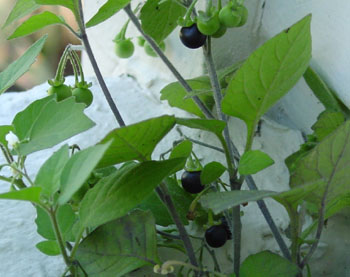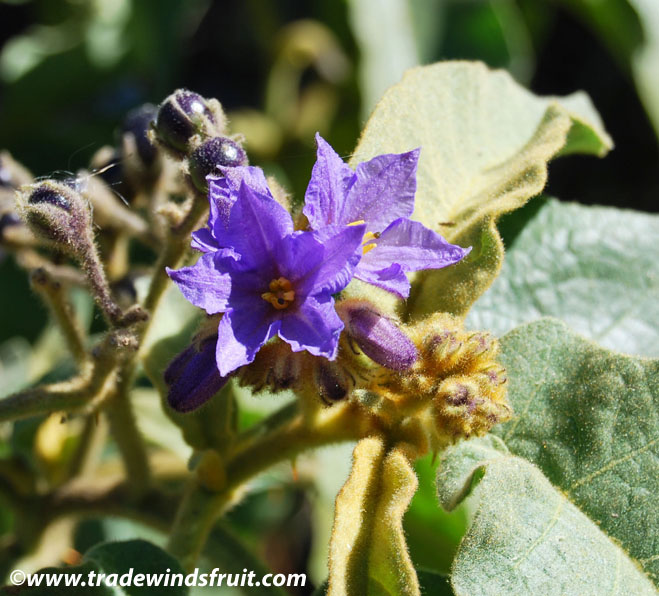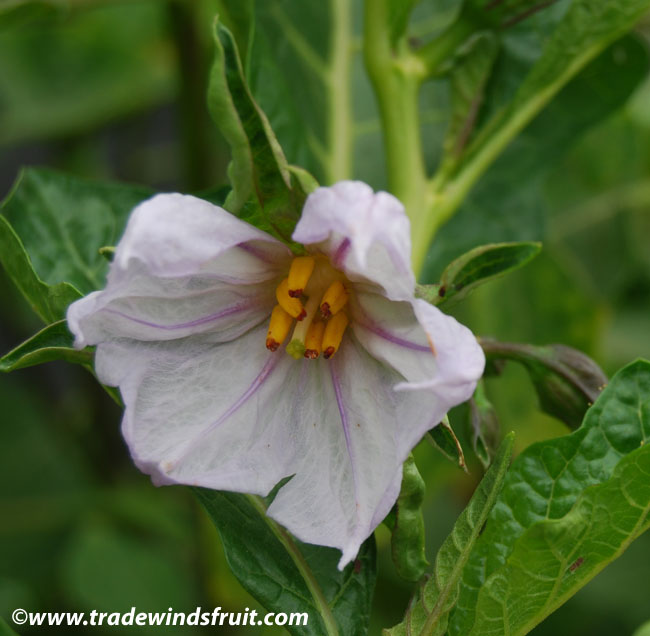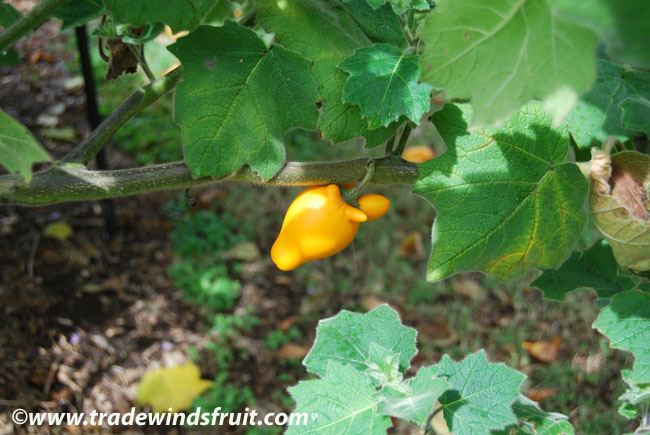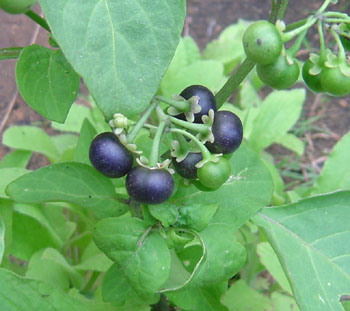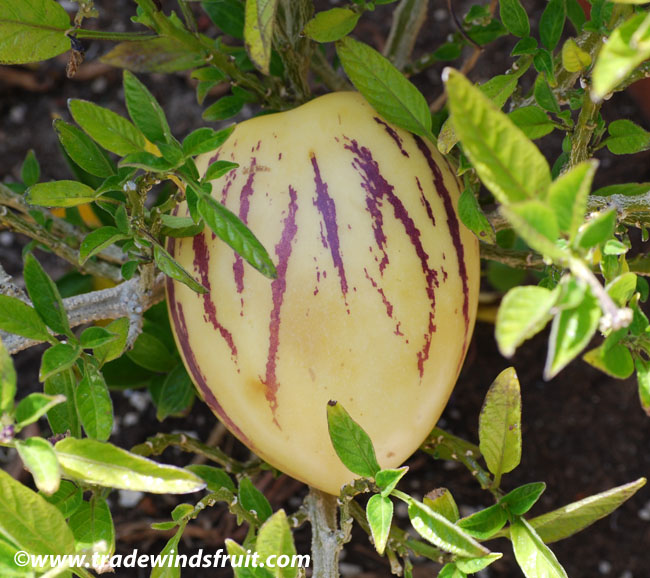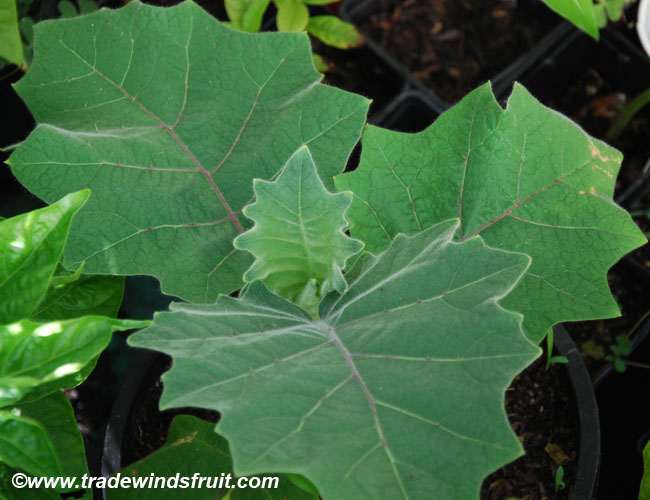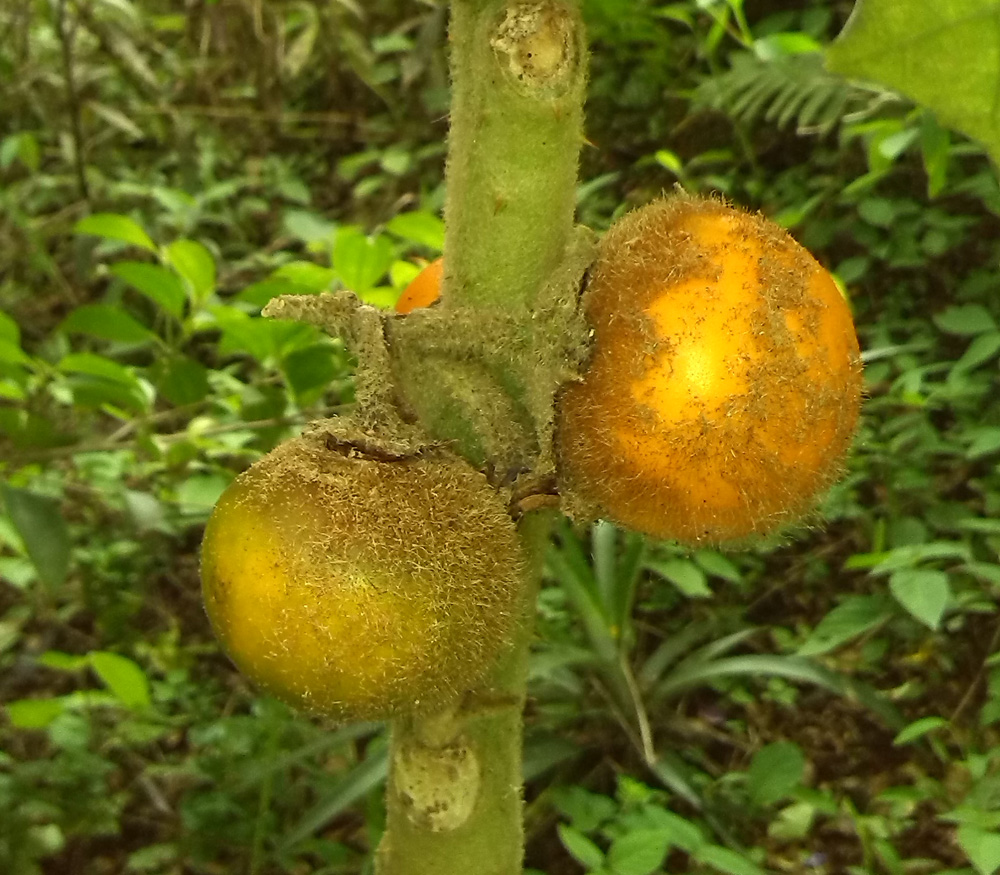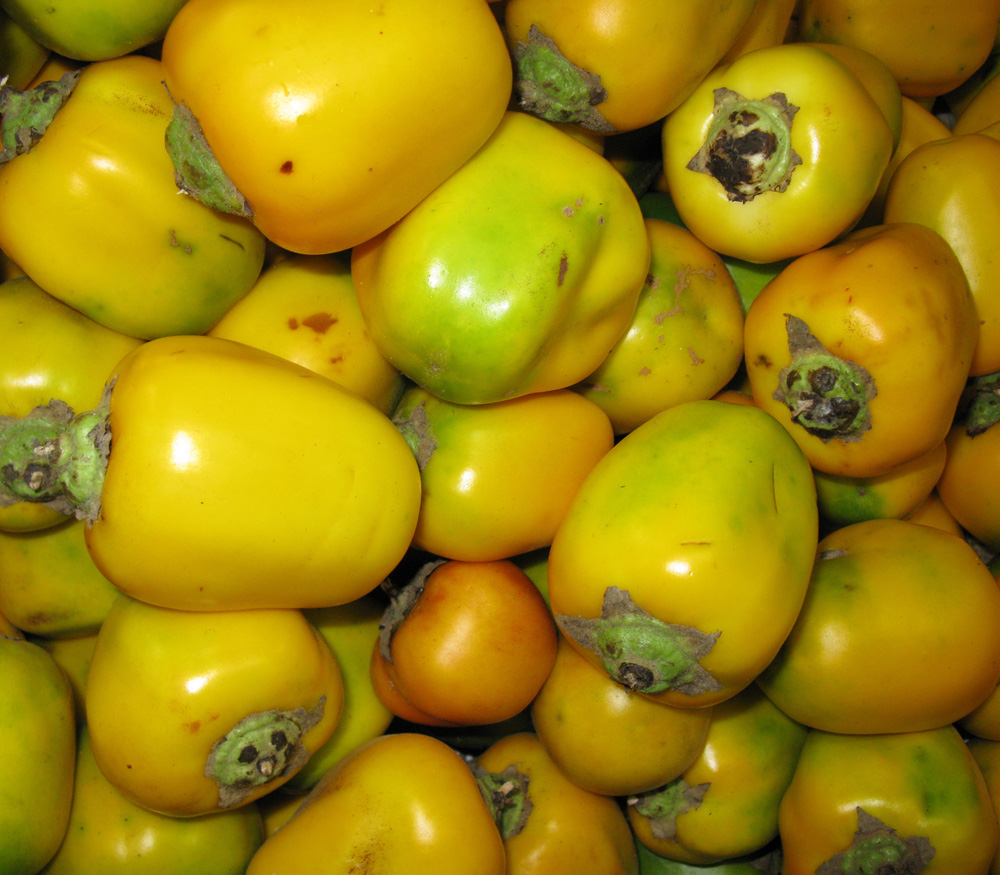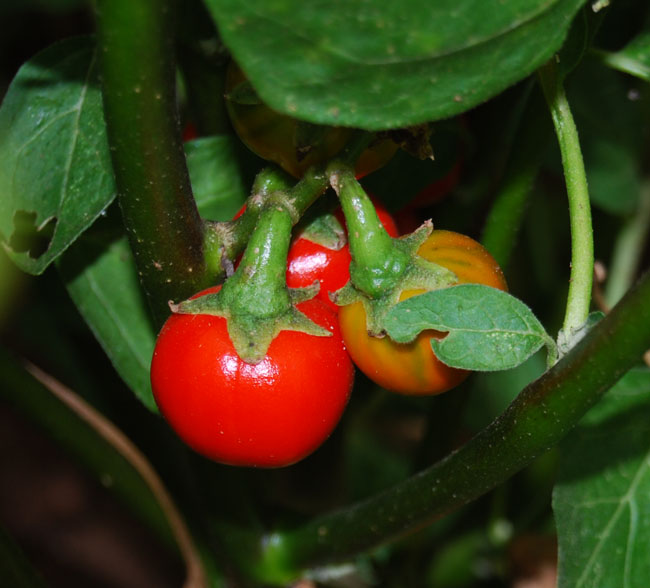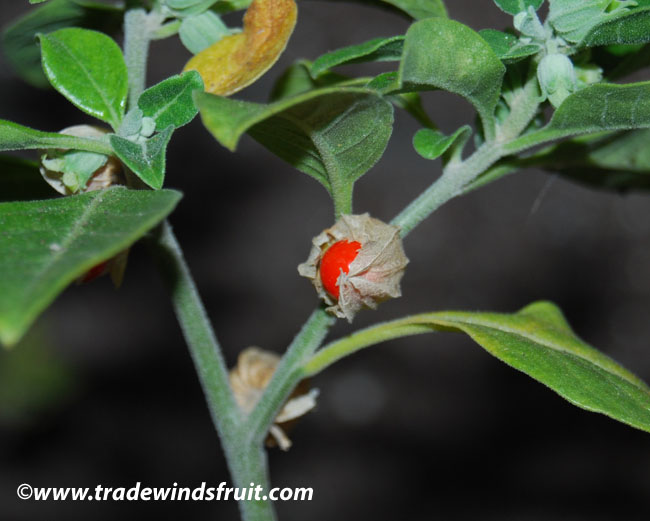- Home »
- Information »
- Sunberry
Sunberry
Physalis minima
A round, shiny-skinned fruit about the size of a cherry tomato, having a sweet and pleasant acid flavor that is high in vitamin C.
Seed Availability
Seeds are not available for the Sunberry. Please visit our seed store to view current selections. Seeds were last available in May 2012.
Description
A fairly low-growing annual, usually to 1-3ft. Typical Physalis growth pattern and shape, with some branching and pretty yellow flowers borne at nodes. Fruits ripen in a couple of months and are enclosed in a green-yellow papery calyx which protects them from pests.
Hardiness
Not frost hardy, but can be grown pretty much anywhere as an annual.
Growing Environment
Loves full sun or part shade and regular water. Makes a great container specimen. Grow in well-drained soil of pretty much any type.
Propagation
By seeds, which usually germinate within 1-8 weeks.
Germination Info
Physalis seeds are usually fairly easy to germinate, though germination time can be a bit longer than other vegetable seeds.
1) Prepare for planting. Physalis seeds should be sprouted in small containers, preferably 4" or smaller. In-ground germination is not recommended because conditions are not as easily controlled. Use a standard potting mix that is well drained. Make sure potting mix is damp prior to planting the seeds. With very small seeds such as Physalis, watering overly dry soil can cause the seeds to dislodge from their position and sink deep into cracks in the soil. Seeds that sink deeply into soil will not be able to reach the soil surface once germinated.
2) Plant seeds. Plant seeds 1/4" deep in the soil. Cover with soil and water carefully. Over watering can cause fungal growth which leads to seed rot. Excess water can also bury seeds deep in the soil where they will not be able break the surface. Water when the soil surface just begins to dry. Multiple seeds can be planted in a single starter container, but should be thinned once seedlings appear so only a single plant remains.
3) Germination. Soil should be kept consistently warm, from 70-85F. Cool soils, below about 60-65F, even just at night, will significantly delay or inhibit germination. Hot soils above 95F will also inhibit germination.
4) Care of seedlings. Once a few true leaves have developed, seedlings should be slowly moved outside (if sprouted indoors) to ambient light. Care should be taken not to expose seedlings to direct, scorching sun so plants may need to be hardened off via slow sun exposure. Hardening off can be done using a shaded or filtered light location, as well as protection from strong winds, rain or low humidity. Hardening off time varies, but can take 5-10 days.
5) Planting out. Plant in the ground once danger of frost has past and daytime temperatures consistently reach 65F.
Germination time: 2-6 weeks under ideal conditions.
Uses
The ripen fruits are eaten fresh and generally receive good marks for their taste. An additional benefit is that they are high in vitamin C. Raw fruits can be cooked like a vegetable. There are a few medicinal uses and some studies have shown plant extracts have some anticancer activity.
Native Range
Native through Southeast Asia and into Northern Australia.

